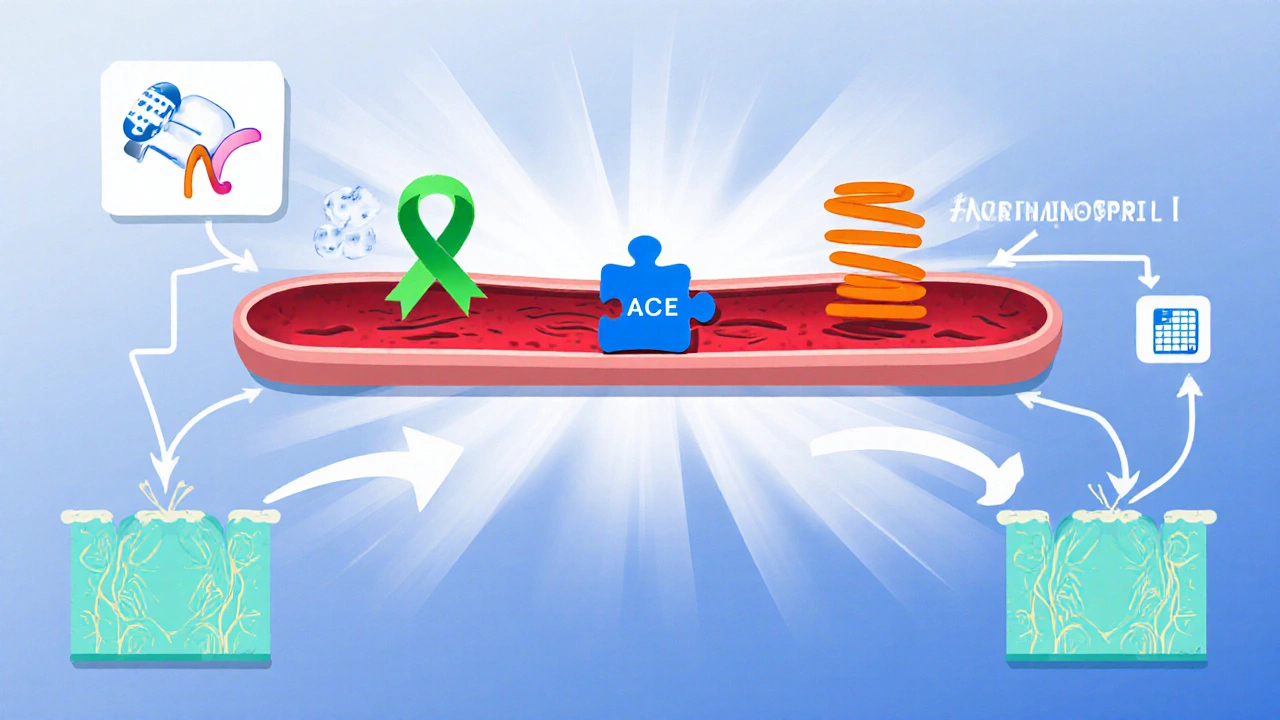When working with ACE inhibitors, a class of drugs that block the conversion of angiotensin I to angiotensin II, lowering blood pressure and easing heart strain. Also known as angiotensin‑converting enzyme inhibitors, they are a cornerstone in cardiovascular therapy.
These agents act by reducing the production of angiotensin II, a potent hormone that narrows blood vessels and raises blood pressure. With less angiotensin II, the blood pressure, the force exerted by circulating blood on arterial walls drops, easing the workload on the heart. In short, ACE inhibitors lower blood pressure, which in turn helps prevent strokes and heart attacks. This simple chain—ACE inhibitors → reduced angiotensin II → lower blood pressure—captures the core therapeutic logic.
Beyond hypertension, heart failure, a condition where the heart cannot pump enough blood to meet the body’s needs is a major target. By decreasing afterload (the resistance the heart pumps against), ACE inhibitors improve cardiac output and slow disease progression. They also protect kidneys in diabetic patients, delay the onset of end‑stage renal disease, and reduce the risk of recurrent heart attacks. In practice, clinicians often start an ACE inhibitor when a patient shows any of these red flags, because the drug’s proven benefits outweigh the modest cost.
Side effects, however, keep the conversation balanced. A dry, persistent cough is the most common complaint—up to 10 % of users notice it after a few weeks. Some patients develop high potassium levels (hyper‑kalaemia) or a rise in creatinine, signalling kidney stress. When cough or lab abnormalities become problematic, doctors frequently switch to ARBs, angiotensin receptor blockers, which block the same pathway downstream and usually spare the cough. This alternative showcases the therapeutic flexibility within the renin‑angiotensin system.
Choosing the right ACE inhibitor involves a few practical steps. Start low, especially in older adults or those with borderline kidney function, then titrate up based on blood‑pressure readings and lab results. Pair the medication with a thiazide diuretic if additional pressure reduction is needed; the combination is frequently more effective than either drug alone. Lifestyle tweaks—reducing sodium, exercising regularly, and managing stress—amplify the medication’s impact and help keep side effects in check.
What you’ll see in the articles below reflects this real‑world mix: detailed looks at individual ACE inhibitors, comparisons with ARBs, dosing strategies, and patient‑focused advice on handling cough or potassium issues. Whether you’re a patient curious about why your doctor prescribed lisinopril, or a clinician seeking the latest data on ACE‑inhibitor safety, the collection offers clear, actionable insights that fit everyday practice.

A detailed comparison of Lisinopril with top blood pressure alternatives, covering mechanisms, side effects, dosing, costs, and when to choose each drug.